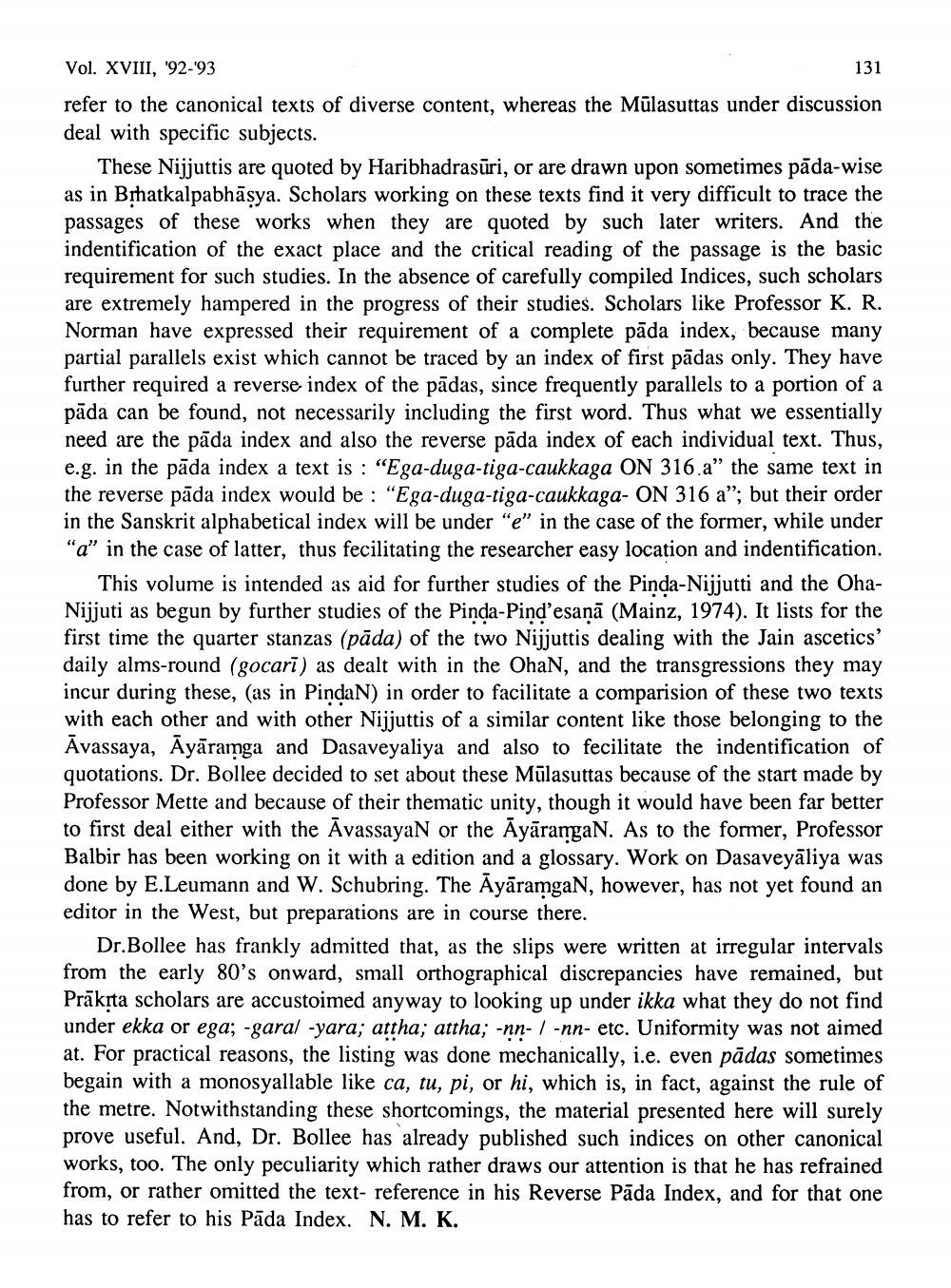________________
131
Vol. XVIII, '92-93 refer to the canonical texts of diverse content, whereas the Mūlasuttas under discussion deal with specific subjects.
These Nijjuttis are quoted by Haribhadrasūri, or are drawn upon sometimes pāda-wise as in Brhatkalpabhāsya. Scholars working on these texts find it very difficult to trace the passages of these works when they are quoted by such later writers. And the indentification of the exact place and the critical reading of the passage is the basic requirement for such studies. In the absence of carefully compiled Indices, such scholars are extremely hampered in the progress of their studies. Scholars like Professor K. R. Norman have expressed their requirement of a complete pāda index, because many partial parallels exist which cannot be traced by an index of first pādas only. They have further required a reverse index of the pādas, since frequently parallels to a portion of a pāda can be found, not necessarily including the first word. Thus what we essentially need are the pāda index and also the reverse pāda index of each individual text. Thus, e.g. in the pāda index a text is : "Ega-duga-tiga-caukkaga ON 316.a” the same text in the reverse pāda index would be : “Ega-duga-tiga-caukkaga- ON 316 a”; but their order in the Sanskrit alphabetical index will be under "e" in the case of the former, while under "a" in the case of latter, thus fecilitating the researcher easy location and indentification.
This volume is intended as aid for further studies of the Pinda-Nijjutti and the OhaNijjuti as begun by further studies of the Pinda-Pind'esanā (Mainz, 1974). It lists for the first time the quarter stanzas (pāda) of the two Nijjuttis dealing with the Jain ascetics' daily alms-round (gocari) as dealt with in the OhaN, and the transgressions they may incur during these, (as in Pindan) in order to facilitate a comparision of these two texts with each other and with other Nijjuttis of a similar content like those belonging to the Avassaya, Āyāramga and Dasaveyaliya and also to fecilitate the indentification of quotations. Dr. Bollee decided to set about these Mūlasuttas because of the start made by Professor Mette and because of their thematic unity, though it would have been far better to first deal either with the AvassayaN or the Āyārangan. As to the former, Professor Balbir has been working on it with a edition and a glossary. Work on Dasa done by E.Leumann and W. Schubring. The Āyāramgan, however, has not yet found an editor in the West, but preparations are in course there.
Dr.Bollee has frankly admitted that, as the slips were written at irregular intervals from the early 80's onward, small orthographical discrepancies have remained, but Prākrta scholars are accustoimed anyway to looking up under ikka what they do not find under ekka or ega; -garal -yara; attha; attha; -nn- / -nn- etc. Uniformity was not aimed at. For practical reasons, the listing was done mechanically, i.e. even pādas sometimes begain with a monosyallable like ca, tu, pi, or hi, which is, in fact, against the rule of the metre. Notwithstanding these shortcomings, the material presented here will surely prove useful. And, Dr. Bollee has already published such indices on other canonical works, too. The only peculiarity which rather draws our attention is that he has refrained from, or rather omitted the text- reference in his Reverse Pāda Index, and for that one has to refer to his Pāda Index. N. M. K.




